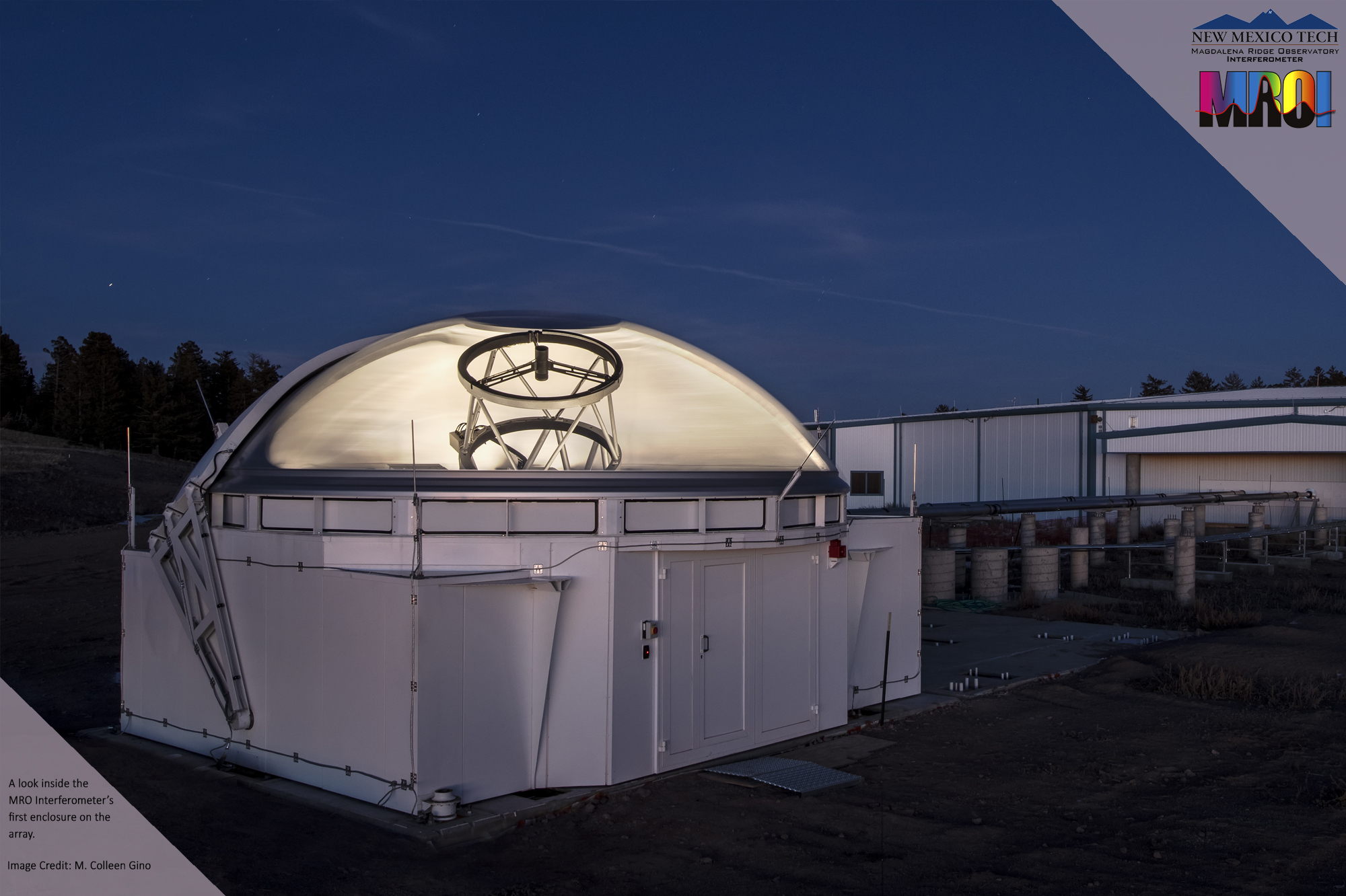While we in the Socorro area welcomed the much-needed rainfall last night, it certainly didn’t allow for any comet viewing! The weather forecast looks about the same for tonight, which is great for our vegetable gardens but not so great for astronomical observing.
If the weather were to cooperate and give us some clear skies to the northwest tonight, Comet NEOWISE will be seen about 25° above the horizon at 9:35 PM MDT, as illustrated in the attached sky chart. Even if the skies are not clear enough to see the comet at this exact time, you may want to check again every so often, because the comet will be above the horizon for another couple of hours. If the clouds are moving about, you just might get a glimpse of the comet.
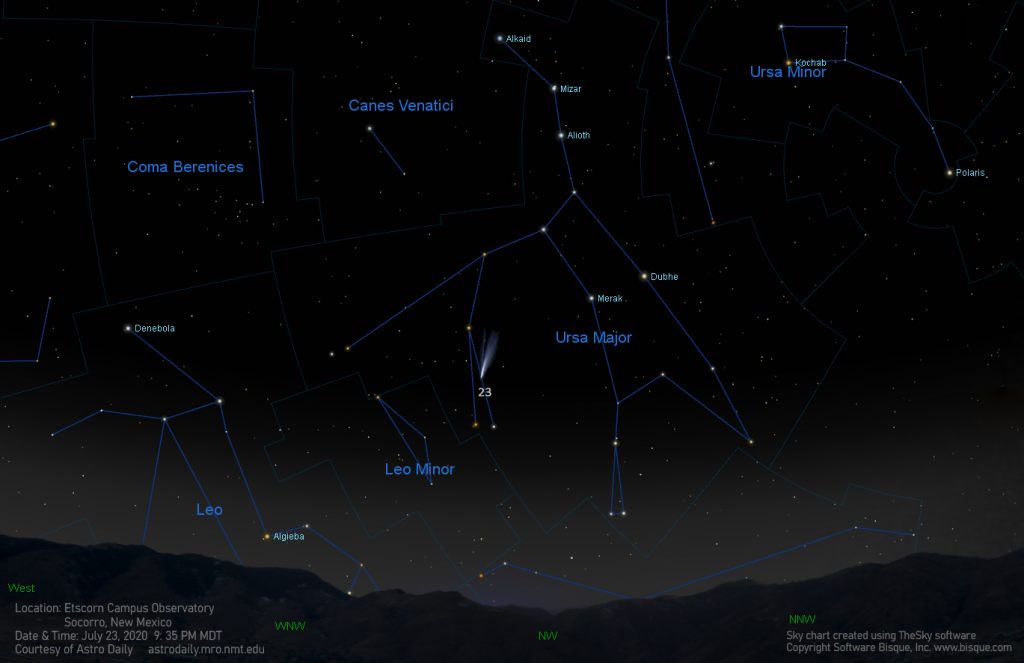
You’ve probably noticed that when we describe the location of a celestial object in the sky, we often give its distance from another easily recognizable celestial object or its height above the horizon in degrees (its altitude). Trying to figure out angular distances in the sky may sound challenging at first, but it’s quite simple to measure distances using nothing but your hands!
The drawing below illustrates the distances that different parts of your hand can measure. The key is to have your arm fully extended in front of you for these measurements to be most accurate.
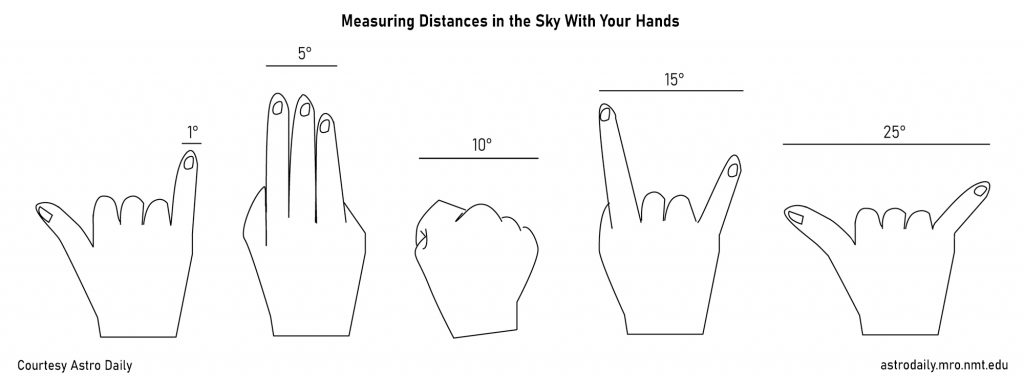
The sky chart below is the same location, time and date as the previous one, but in this version we illustrate the hand position you would use to measure the comet at 25° above the horizon.
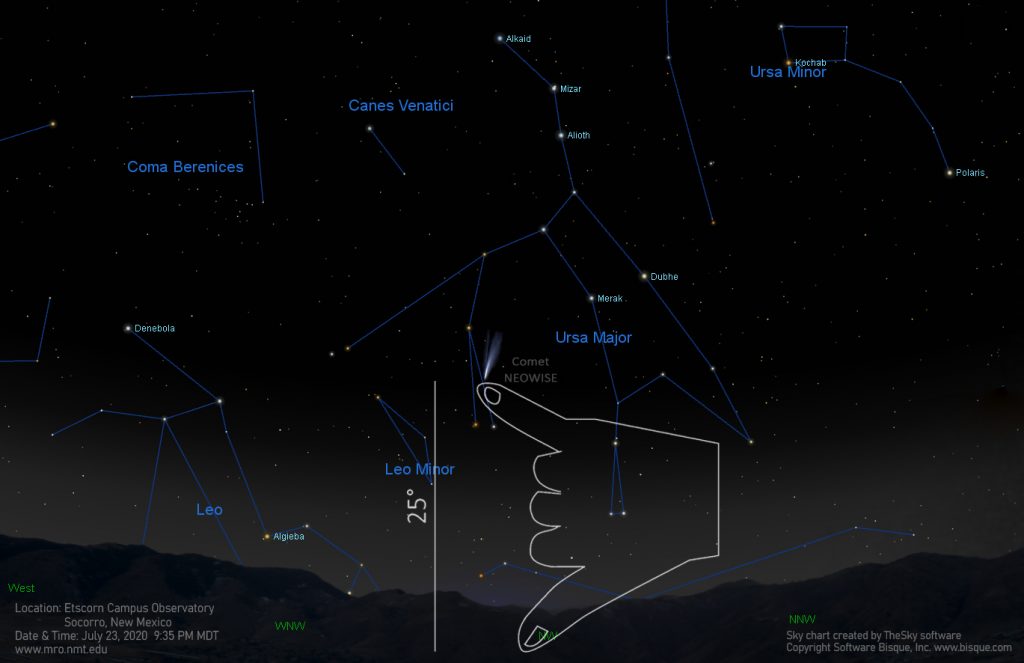
But wait! That thumb isn’t on the horizon at all, it’s below the horizon, right? Well, yes and no.
If you are measuring a distance above the horizon, you need to measure from where the true horizon would be if there were no obstructions such as structures, trees, or mountains. The true horizon is what your line of sight would be if there were no obstructions between you and the curve of the Earth in the distance, as if you were on a boat in the middle of the ocean. Your visible horizon is the line dividing the sky and the obstructions you see from your viewing position such as houses, hills, trees, etc.
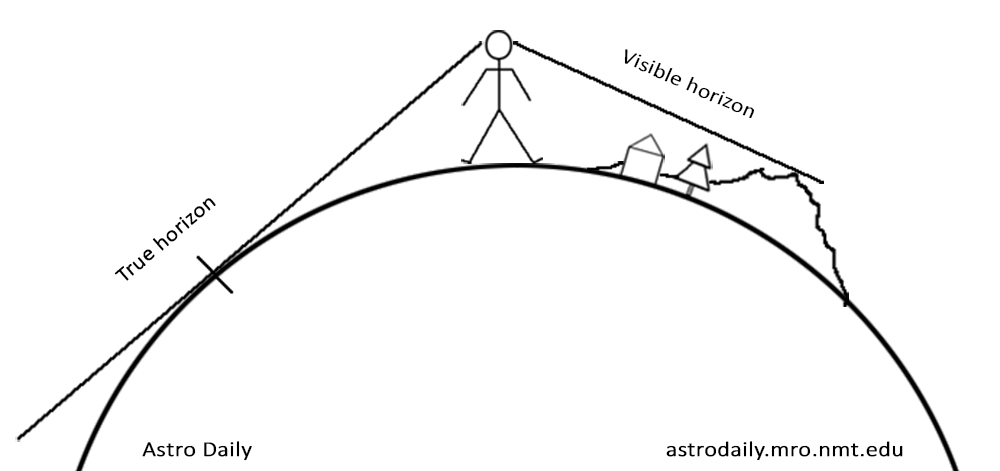
Your visible horizon has a great impact on what celestial objects you can see low in the sky. For example, if you’re in the city of Socorro, like we will be tonight at New Mexico Tech’s Etscorn Campus Observatory, don’t expect to see anything close to the horizon due west thanks to our beloved M Mountain. But the view to the northwest at azimuth 310° should be just fine!
Wait, azimuth 310°, what’s that about? Stay tuned to find out!
M. Colleen Gino, MRO Assistant Director of Outreach and Communications
